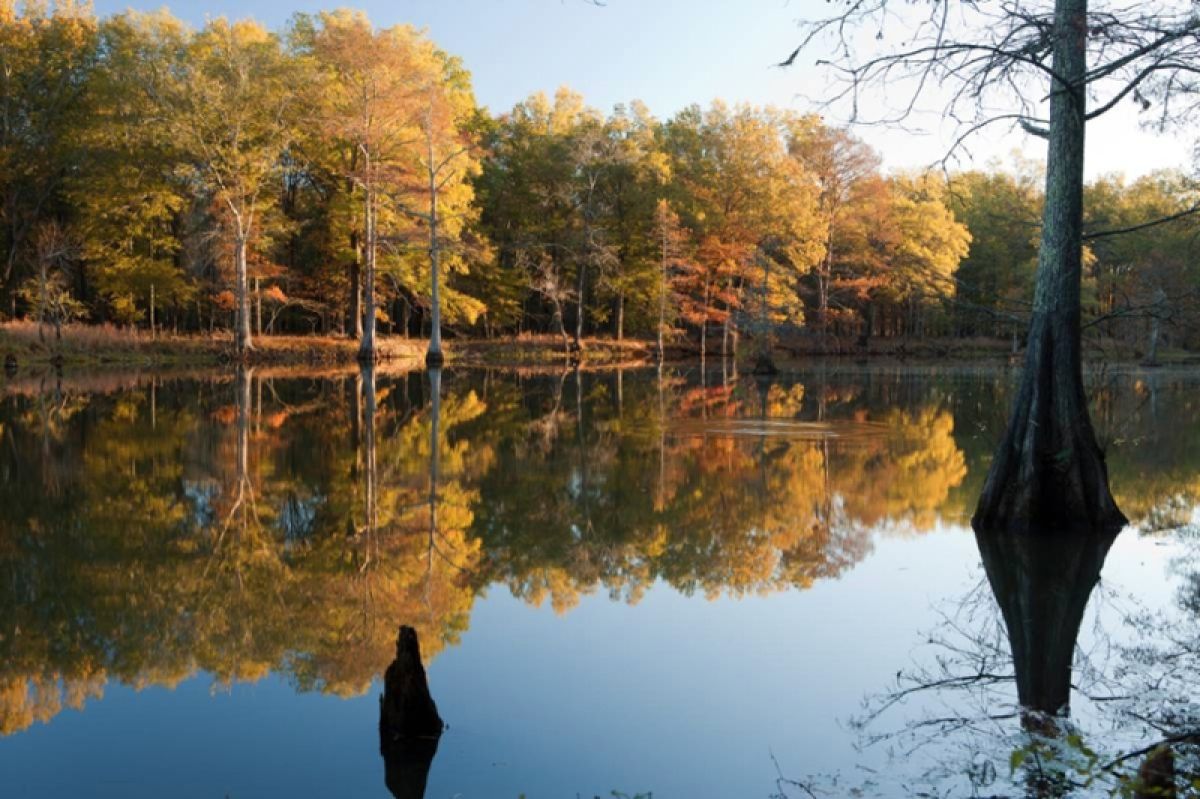
The Mingo Wilderness Area in southwestern Missouri is one of two areas protected under federal air quality regulations. Missouri is one of 34 states that has not submitted a federally mandated plan to the EPA for reducing air pollution in its wilderness areas. (Missouri Department Of Conservation)
Several of the largest conservation nonprofits in the U.S. claim in a federal lawsuit that the Environmental Protection Agency has failed to enforce air quality standards.
As part of the Clean Air Act, every state must submit a detailed plan to the EPA every 10 years for reducing air pollution in national parks and wilderness areas. Nearly three dozen states, including Missouri, Illinois, Iowa and Nebraska have not submitted updated plans to the EPA — and environmental advocates hope to compel the federal agency to take action.
Haze forms when sunlight hits tiny particles of air pollution, creating a smog-like curtain that reduces visibility.
In the late 1990s, the EPA established the Regional Haze Rule to help curb the worsening shroud of pollution obscuring the nation’s most scenic regions. To fulfill the requirements, states must cooperate with officials across four federal agencies to improve visibility in protected areas.
The requirements apply to 156 national parks and wilderness areas nationwide, including Hercules-Glades Wilderness Area and Mingo Wilderness Area in southern Missouri.
The EPA amended federal regulations in 2017 and extended the deadline to July 2021 for the most recent round of state regional haze plans. More than two-thirds of all states have yet to submit their plans, however, including Oklahoma, Minnesota, South Dakota and North Dakota. The agency announced in early April that it was extending the deadline a second time to Aug. 31.
But that decision is at odds with federal law, said Stephanie Kodish, senior director and counsel for the National Parks Conservation Association’s Clean Air and Climate Programs.
“These plans are already overdue,” Kodish said. “There’s no magic or mystery here. States are supposed to be steadily working on these plans to drive down emissions.”
The National Parks Conservation Association, along with the Sierra Club, Center for Biological Diversity and Environmental Defense Fund, sued the EPA in U.S. District Court on Wednesday.
The EPA did not respond to a request for comment.
Illinois does not have any national parks or wilderness areas included in the Regional Haze Rule, but is still required to submit a plan to the EPA. Pollution from industrial facilities can drift hundreds of miles, potentially affecting air quality for protected areas in neighboring states.
In Missouri, state officials released a draft regional haze plan in late March and will accept public comment through May 5.
The plan identifies seven Missouri-based industrial facilities that are negatively affecting air quality in the Mingo Wilderness Area, including the Rush Island Energy Center, New Madrid Power Plant and the Sikeston Power Station.
Air pollution from six facilities in Missouri is also drifting into the Hercules-Glades Wilderness Area near Branson, according to state officials.
The plan does not include any requirements for facilities to reduce emissions, however.
Cutting emissions from coal-fired power plants and other industrial facilities should be a key priority for Missouri state officials, Kodish said.
“It's the same pollution that's unhealthy for people to breathe, that's harmful to ecosystems and wildlife,” Kodish said. “When we're talking about regional haze pollution, yes, it diminishes the clarity and the distance that we're able to see, but it's also the very same pollution that harms people's respiratory systems.”













